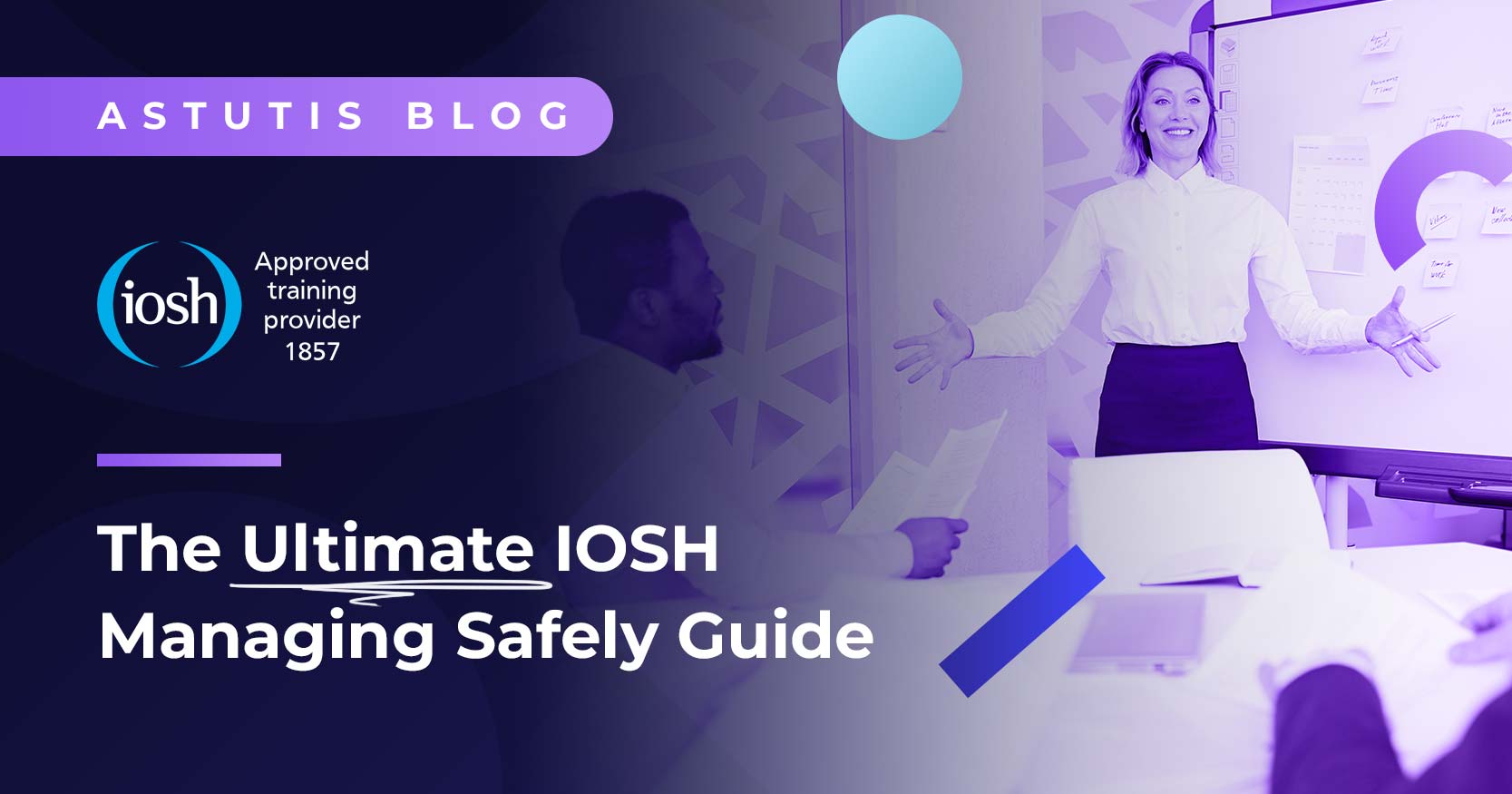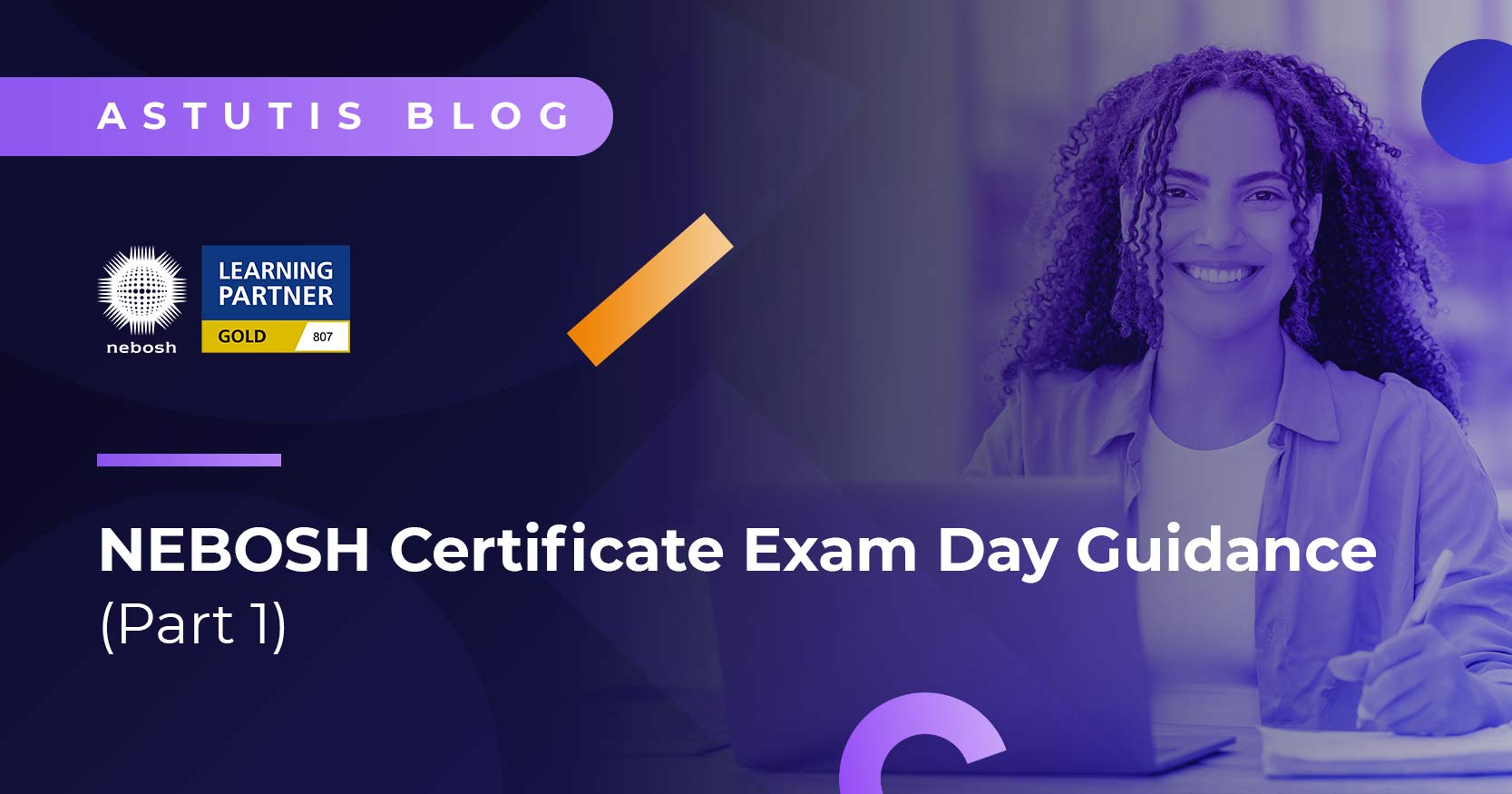10 Steps to Conducting an Effective Health and Safety Training Needs Analysis
This blog was updated in August 2022
The lifeblood of any effective training programme lies in correctly identifying who needs to be trained, in what, and for what outcomes. In order that you train the right people, in the right competencies, with the right learning methods, it is important that you undertake an effective needs analysis before implementing any health and safety training programme.
What is a needs analysis?
A ‘needs analysis’ is the process of identifying and evaluating needs in a community or other defined population of people. In identifying a need, you will need to follow a process of describing the ‘problems’ or ‘issues’ of your target population and highlighting possible solutions to these problems.
Like most programme evaluations, an effective needs analysis should focus on the future and what should be done, as opposed to what has been done thus far.
More specifically, a Training Needs Analysis (TNA) is ‘the process of identifying the gap between employee training and needs of training. In order to determine whether training will address the problem(s) identified, a TNA forms the first stage in the training process. In viewing training as an ‘acquisition of skills, concepts or attitudes resulting in improved performance within a working environment’, a successful TNA will consider each aspect of an operational system so that initial skills, concepts and attitudes (the human elements inherent in an operational system) can be effectively identified and the right training specified. A TNA should form part of the ‘system development process’ due to the close links between system design and the training required.
An effective TNA will provide an employer with answers to the following questions:
- What training is needed and for what reason?
- Where is the training needed?
- Who needs to be trained?
- How will training be provided?
- How much will the training cost?
- and ultimately….What will be the effect of training on the business?
In order that you train the right people, in the right competencies with the right learning methods it is important that you undertake an effective needs analysis before implementing any health and safety training programme.
10 Steps to Conducting a Health & Safety Training Needs Analysis:
1. Identify Desired Business Outcomes
Before undertaking a health and safety TNA, an employer will need to convey the goal of the training i.e. What are the expected business outcomes? The training goal should match an overarching business objective, whether it be specific to a work unit, department, at organisational level or with an individual employee. If the end goal is communicated to employees and constantly reminded, the TNA process will continue to work towards the desired outcomes. At the end of the process, an employer should be able to identify, as part of training KPI’s, how the training has worked.
Example health and safety linked business goals/objectives:
- Reduced injury and illness rates
- Improved productivity/output
- Increased workforce morale
- Reduced sickness absence
- Reduced insurance premiums
2. Link Desired Business Outcomes With Employee Behaviour
A multitude of behaviours can be associated with the desired business outcome and each is a result of employees knowing what to do and having the capability and motivation to do it.
Early on in the process, employers should identify the desired critical competencies including as linked to outcomes:
- behaviours
- knowledge
- skills
- abilities
- personal
The health and safety competent person should be your ‘go to’ subject matter expert for the collection of this necessary information.
3. Collate Data
Concrete decisions should be made on concrete data in order to be substantiated. This data collection can take the form of employee interviews, focus groups and surveys, but whichever method is employed, the data used should form the basis of providing a clear understanding of the importance of competencies as related to the business goal identified.
Each competency should be rated against a scale to assess its importance. Ask the question: How Important is (insert health and safety competency) to successful job performance?
We’ve used a 5-point Likert scale* as an example here although a rating scale** is equally interchangeable for gathering qualitative and quantitative data.
- 0 = not important
- 1 = slightly important
- 2 = moderately important
- 3 = very important
- 4 = extremely important/of critical importance
Health and safety competencies should be scaled in a similar to the above so that training needs identified can be met in the appropriate order of importance – working back from a ‘critical requirement’ (i.e. to ensure compliance is met, or to ensure that lives are not lost) to a ‘nice to have’.
4. Pinpoint (trainable) Core Competencies
It is important to recognise that it is not possible to improve each and every competency through training, and an example here could be an individual's personality as needed for that post. On occasion, it can be more effective for an employer to hire people with ‘best-fit’ character attributes and existing (specialised) knowledge than to educate and train them – and it is important to recognise when you need someone to ‘hit the ground running’. In health and safety terms, an aspirational qualification such as the NEBOSH Diploma can take between one and a half and three years to complete.
5. Evaluate Core Competencies
With core competencies identified, it is advisable that employers determine the extent to which these are held by the workforce by employing competency evaluations and/or tests or assessments.
When evaluating observable behaviours, performance evaluation surveys can be employed and conducted by line managers or supervisors based on the core competencies you have identified in previous steps. 360-degree surveys*** (peers, subordinates, customers) can be used in the evaluation of supervisors, line managers or company executives.
In order to ensure the effectiveness of any competency/performance evaluation, keep to ‘observable’ competencies. For unobservable competencies such as skills, abilities and personality, refer to professional tests/assessments as a valid measure of a targeted core competency.
If you need to measure more specialised knowledge, effectiveness as a major segment of a specific area of responsibility, custom-designed assessments (including multiple-choice tests or more in-depth on-the-job simulations…think flight simulators for pilots) could be more appropriate.
6. Identify and Understand Gaps in Performance
Combine the results or outcomes of your surveys to identify which employees need to up-skill the identified competencies, but first establish some ground rules for recognising what makes for a ‘competence gap’. This will vary from organisation to organisation or employer to employer depending on standards set by the individual employer or organisation.
In the setting of such benchmarks, you will be able to establish a clear pattern for determining those who come in above or below a certain standard – by default, those who fall below the identified standard would be the ones to consider for training.
7. Set Priorities
At this stage, you should seek the number of employees or the percentage of the workforce as a whole (or workforce targeted) that is in need of training while looking at the importance of the competency in question (as identified in your previous stages). In considering both these aspects together, a list of training priorities will be your outcome.
8. Identify Modes of Training
With various methods for training at your disposal, Online, Virtual Classroom, Distance, Traditional Classroom, decisions on how to train your workforce will need to be determined. Training methods might include:
- On the job
- Mentoring/coaching
- Virtual Classroom training-based
- Online learning
- Distance learning
- Blended learning (a combination of online and Virtual)
- Books
- Conferences (usually you will find a multitude of CPD worthy seminars)
- University or college programmes
- Bespoke courses (whereby a course is tailored to your specific sector and delivered by consultants with niche experience)
Consulting professionals with experience in adult learning techniques is advised in determining the right ways for a workforce (or specific sector) to acquire a particular competency.
While no two individuals will learn the same, some modes of learning will work better than others for the competency in question with research revealing that learners tend to retain information better if they are able to perform that skill or task. This retention is estimated at about 75 percent while listening to a lecture scores at just 5 percent.
Learning retention rates:
- Listening to a lecture – 5%
- Reading – 10%
- Audio-visual – 20%
- Demonstration – 30%
- Discussion group – 50%
- Performing a skill or task – 75%
This is worth bearing in mind when investing in suitable training materials for the material being covered while having the best chance for retention.
To assist in deciding the right training method, Astutis have a helpful guide that explores the different learning methods available. Download a copy here.
9. Undertake a Cost Benefit Analysis
Training, like any other organisational resource, makes for a considerable investment – both in time and money – so you will want to ensure that the associated costs are met by covering as many gaps in performance as possible.
Include the following cost factors in your analysis:
- Training time required
- In-house development of content
- Outsourced development of content
- In-house delivery of training content
- Outsourced delivery of training content
- Training evaluation
- Lost productivity from workforce directed to training
- Travel/logistics expenses
Benefits:
- Reduced injury illness rates
- Reduced absence due to injury illness
- Reduced insurance premiums
- Compliance met
- Increased productivity/output
- Increased profit margins
Varying training methods will, in turn, have varying degrees of success specific to your field of operation and employers will need to find a happy medium between associated costs and desired results.
10. Evaluate
Last but not least, for the reasons mentioned in step 9, you will want to closely evaluate any training undertaken by your staff to ensure that your money was well spent and the training worked! Ultimately, any training delivered can only be deemed successful if the information imparted as part of the process has been retained and implemented in the working environment. Similarly to identifying training needs, you will need to establish to what extent the training has:
- improved the competencies targeted
- improved job performance
- resulted in a positive ROI
Related Blogs

Real Life Stories









